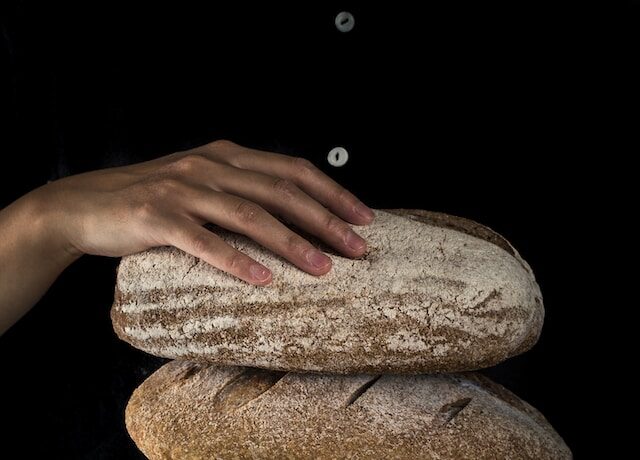Prepare to learn the mysteries behind the distribution of mountain bread as you step behind the scenes! We’ll explore the mountain bread industry’s rich history, distinctive qualities, and ecological initiatives throughout this engrossing voyage. Join us as we explore the fascinating world of mountain bread and how it gets to our plates, from its modest beginnings to its tremendous popularity today. So get yourself a cup of tea and join me as we go on this behind-the-scenes tour!

Distribution of Mountain Bread’s Past
The craft of making bread took on a distinctive form centuries ago in the vast mountainous areas of ancient civilizations. Mountain bread, sometimes referred to as lavash or flatbread, has long been a mainstay diet item. Its roots can be found in many different global cultures.
Mountain bread was originally created with basic components like flour, water, and salt in various countries of Asia and Europe. After that, the dough would be thinly rolled and baked in clay ovens or on hot stones. This approach made it simple to transport and store on lengthy trips across difficult terrain.
The demand for a Mountain Bread distributor expanded throughout time, reaching beyond its immediate settlements. Technology and transportation developments have opened up new distribution options. The producers started looking into ways to spread the word about this gastronomic gem to audiences far beyond their immediate vicinity.
Mountain bread is now sold all over the world through a variety of outlets, including specialty shops, supermarkets and internet retailers. Because of its nutritious qualities and adaptability in preparing tasty meals, it has become a preferred option among health-conscious consumers.
Producers, distributors, and retailers must work together with great care to organise and coordinate the process from the mountains to our tables. Every stage of the process guarantees that this age-old treat arrives to us in perfect condition and ready to entice our palates.
Take a minute to appreciate not just the rich history of mountain bread but also the complicated network that transports it from the top of the mountains to your plate the next time you enjoy a warm slice packed with your favourite ingredients or use it as a crunchy companion to dips and spreads.
Mountain Bread Varieties and Their Distinctive Features
A tasty and adaptable choice for anyone wishing to spice up their meals is mountain bread. Its texture is thin and flexible, making it ideal for snacking on crisps or wrapping up contents. However, did you know that there are various varieties of mountain bread, each with distinctive qualities of its own?
A common variety of mountain bread has a soft, chewy feel since it is produced with wheat flour. This kind of bread is frequently used in Mediterranean cooking, where it is the ideal vehicle for dishes like feta cheese, hummus, and grilled veggies.
Rye flour is used in another variety of mountain bread. Rye is an excellent option for sandwiches with heavy ingredients like roast beef or smoked salmon because it gives the bread a nutty flavour. Additionally, it goes nicely with creamy spreads like avocado or cream cheese.
Alternative grain kinds, like buckwheat or quinoa, are also used to make versions of mountain bread that are gluten-free. These substitutes not only accommodate dietary requirements but also provide distinctive tastes and textures that enhance any dish.
The adaptability of mountain bread is a constant, regardless of the variety you select. This thin and malleable treat will always produce great results, whether you’re using it in place of standard sandwich wraps or getting creative with toppings for appetisers at your next event! So walk forth into the realm of mountain bread and allow your taste buds to take you on a delectable journey!
The Method Used to Deliver Mountain Bread
After the delectable mountain bread is prepared, the convoluted distribution process may start. This intricate process behind the scenes guarantees that this much-loved dish reaches every corner of the nation, ready to be savoured by everybody.
The first step in the process is to properly pack the mountain bread into sturdy, safe containers. In order to preserve the delicate flavour and texture that make mountain bread so unique, this step is essential. These packages are then loaded onto vehicles that are specifically constructed for the safe transportation of food products.
The careful planning required to route these trucks effectively follows next. Strategically placed distribution centres in various locations are essential to this operation. These hubs serve as gathering places for different shipments before they are distributed to nearby merchants, supermarkets, and even internet shops.
Temperature-controlled storage facilities are used to preserve freshness and quality throughout transportation. These facilities guarantee that mountain bread doesn’t dip below its peak until it gets to where it’s going.
In order to efficiently meet demand, producers, distributors, and retailers must work closely together at every stage of distribution. In order to guarantee seamless operations and prevent any delays or disturbances along the route, timely communication is crucial.
Recent technological developments have been crucial in significantly simplifying distribution procedures. Order fulfilment efficiency is maximised and stock levels are precisely tracked with the use of inventory management systems.
We may better appreciate not only how our favourite snack comes up on shop shelves, but also all the people who work so hard behind the scenes to make it happen smoothly, when we comprehend the complexities involved in distributing mountain bread!
Initiatives for Sustainability in the Mountain Bread Sector
Industries must embrace sustainable methods as customers grow increasingly aware of their impact on the environment. The mountain bread market is not an anomaly. A greater emphasis has been placed in recent years on integrating sustainable initiatives throughout the distribution chain.
A solution used by producers of mountain bread to solve sustainability issues is obtaining ingredients from nearby farmers that use organic farming practices. By doing this, they lessen the carbon impact caused by the long-distance transportation of components in addition to boosting local economies.
Additionally, in an effort to reduce waste and encourage recycling, a lot of businesses have begun utilising eco-friendly packaging materials. Using compostable or biodegradable wrappers made of plant-based materials or renewable resources like bamboo is one of these attempts.
Additionally, a few mountain bread distributors have made investments in solar power and energy-efficient manufacturing techniques. By lowering greenhouse gas emissions, these actions help create a more environmentally friendly future.

Manufacturers have also adopted techniques like optimising manufacturing schedules based on demand estimates and giving extra items to food banks or charity instead of disposing of them in an effort to reduce food waste.
Promoting sustainability in the mountain bread sector requires openness and education. On their websites or in the packaging of their products, several manufacturers offer comprehensive details about their sourcing policies, manufacturing procedures, and environmental activities. This assists customers in making well-informed decisions and motivates other companies to do the same.
To enjoy this age-old treat and protect the ecosystem, the mountain bread sector must prioritise sustainability. In order to preserve the distinctive flavours of mountain bread and leave a healthy earth for future generations, we must embrace environmentally sustainable practices at every level of production and delivery.





